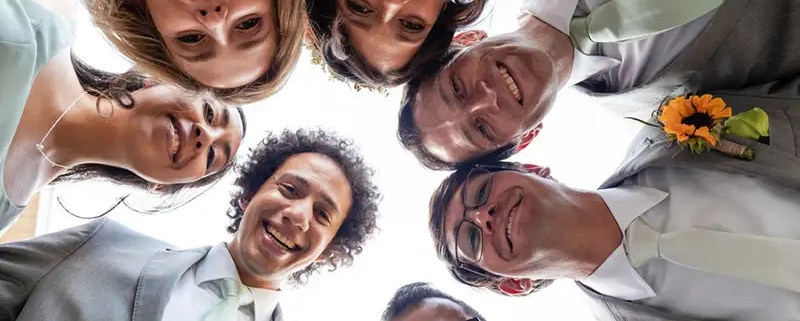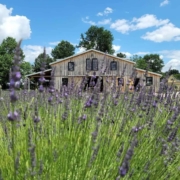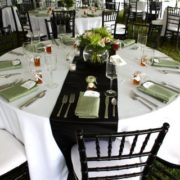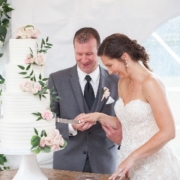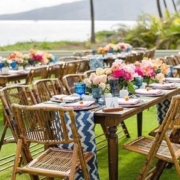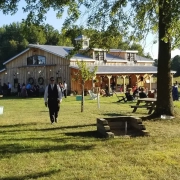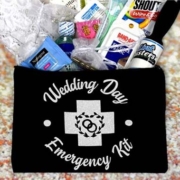Wedding Ceremony Rituals & Traditions
As someone who deeply appreciates the beauty of diverse cultures, I’ve always been fascinated by the myriad of wedding ceremony rituals and traditions worldwide. These ceremonies, rich with cultural significance, indeed highlight the profound connections of love and commitment that couples share. Take, for instance, the heartfelt exchange of vows found in Western weddings or the deep meaning behind the Hindu Saptapadi’s seven vows—each is a testament to the unique values held dear by different societies.
Rings, those timeless symbols of eternal love, have evolved over centuries, carrying many meanings and traditions that continue to captivate us. And let’s not forget about the unification rituals! Whether it’s the soft glow of candlelight or the vibrant blending of sand, these acts beautifully symbolize the merging of two lives and families.
I find the richness of traditions, like a Scottish hand-fasting or a Yoruba knot-tying ceremony, to add a layer of symbolic depth that resonates with the soul. It’s these creative and personalized elements that truly enrich a wedding, making each celebration uniquely memorable.
Every tradition has its own enchanting story just waiting to be uncovered, which makes exploring these customs rewarding. There’s something truly special about witnessing how love is celebrated in different corners of the globe—it reminds us of the universal nature of love while celebrating our differences.
Vow Exchange Rituals
I have had the privilege of attending weddings from various corners of the world, and I can tell you that the exchange of vows is undeniably the heart and soul of the ceremony. It’s where the magic happens, where words shape a future. In Western weddings, these vows often become personal promises, almost like a love letter read aloud. Couples pour their hearts out, making pledges that echo their unique journey together — promises of unwavering support, eternal fidelity, and a partnership that stands the test of time.
Then there’s the fascinating blend you find in Eastern traditions. Take Hindu weddings, where the Saptapadi ritual steals the show. Here, couples take seven meaningful steps together, each symbolizing a distinct vow. It’s a profound and poetic moment, deeply rooted in spirituality.
Jewish weddings bring a different flavor with reciting the “Sheva Brachot,” or seven blessings. These aren’t just vows; they’re sacred words that wrap themes of joy, love, and unity around the couple, witnessed by those dearest to them. And if you’ve ever attended an Islamic wedding, the “Nikah” ceremony stands out for its emphasis on mutual respect and responsibility, with the marriage contract sitting at its core.
No matter where you are, these rituals share a timeless essence. They aren’t just about the here and now but mark the dawn of a new journey together. It’s a public promise, a commitment witnessed by family and friends, binding two lives with an intent for a future filled with shared dreams.
Ring Exchange Symbolism
When a couple stands before their loved ones to exchange rings—it’s truly something special. This isn’t just a formality or a straightforward handover of jewelry; it’s a beautiful ritual steeped in layers of symbolism that echo through time and across cultures. This exchange is one of the most moving parts of any ceremony. It’s a declaration of eternal love and unyielding commitment.
Consider the ring itself—a circular form with no beginning or end. It’s the perfect metaphor for infinity, suggesting that the bond between the couple is as enduring as time itself. This powerful imagery has fascinated people throughout history. Think about it: the ancient Egyptians used reeds and hemp to create rings symbolizing eternity, while the Romans later opted for iron and gold, adding elements of strength and wealth into the mix. And then there’s the charming Western tradition of wearing rings on the fourth finger of the left hand, all because of the “vena amoris,” or “vein of love,” believed to run straight to the heart. Isn’t that a lovely thought?
Fast-forward to today, and you’ll see couples opting for rings made from various materials, often set with dazzling precious stones. Some even add personal engravings inside the band, infusing each ring with a unique personal touch. As they slip these meaningful tokens onto each other’s fingers, they’re not just making a vow to cherish and support one another—they’re publicly sealing a promise that, ideally, lasts a lifetime. And really, isn’t that what love is all about?
Candle-Lighting Ceremony
I’ve always found candle-lighting wedding ceremonies to be such a beautiful and meaningful tradition. It’s a unification ritual that seems to resonate across cultures, symbolizing the merging of two lives into one. It’s pretty touching to watch the couple, each holding a taper candle, light a central unity candle together. This simple yet profound act captures the essence of their journeys converging to form a shared future.
This ceremony’s origins are fascinating, as it draws from various traditions, including Christian, Jewish, and interfaith weddings. In some variations, the bride and groom’s parents get involved, too, lighting the individual candles for their children. It’s a lovely way to highlight the blending of families and their support of the newlyweds.
Aside from its deep symbolic meaning, the candle-lighting ceremony adds an element of elegance and solemnity to the wedding. Something about the flickering flames brings peace and reflection, inviting everyone present to witness and share in the couple’s commitment. What I particularly love is how couples make this ritual their own. They might include personalized elements like specific words, music, or even additional customs that reflect their unique journey. Regardless of these personal touches, the candle-lighting ceremony remains a timeless and cherished part of wedding celebrations.
Sand-Pouring Tradition
As someone who’s witnessed countless weddings, I’ve always felt that while the flickering flames of a candle-lighting ceremony evoke warmth and unity, the sand-pouring tradition provides an equally profound symbol of two lives coming together. It’s a ritual that involves the couple pouring sands of different colors into one vessel, symbolizing how their lives, families, and futures blend. Each color often represents personal qualities or aspirations, melding into a harmonious, visually striking, and significant whole.
This beautiful tradition has roots in Hawaiian and Native American cultures, so it’s no surprise it’s gained popularity. Its adaptability and symbolic richness are genuinely remarkable. I’ve seen couples choose sands that reflect their personal stories or significant memories—maybe from a beach they love or a place with special meaning. The pouring is done slowly, allowing the grains to intermix and create a distinct pattern, symbolizing the couple’s intertwined journey.
One of the things I find most endearing about this tradition is its flexibility. It’s a lovely way to involve family members, children, or friends, each adding their layer of sand. The completed vessel becomes a cherished keepsake, a tangible reminder of the commitment and unity forged on that special day. I always say there’s something magical about having a physical memento that embodies the essence of two lives becoming one.
Hand-Fasting Custom
As someone who’s always been fascinated by age-old traditions, I’ve noticed a growing trend among couples today who enthusiastically embrace the enchanting hand-fasting custom. This ritual, steeped in ancient Celtic heritage, involves wrapping the couple’s hands with cords or ribbons, a beautiful symbol of their union and commitment. Historically, hand-fasting was a form of betrothal—a promise exchanged before the official marriage ceremony—especially popular in medieval Scotland and Ireland.
During the ceremony, officiants or even beloved family members take part by wrapping the couple’s hands in a series of intricate knots. Each knot stands for a vow or promise, reinforcing the couple’s dedication to one another. It’s heartwarming to see how couples personalize the experience by choosing cords in colors that resonate with their personal stories or cultural backgrounds. Some even use materials rich in family history, like a cherished grandmother’s lace handkerchief or a father’s well-worn tie.
What I find particularly endearing about hand-fasting is its flexibility. Couples can craft their vows, decide on the number of knots for symbolic reasons, or even invite family members to participate in the ritual. Adopting this ancient custom allows modern couples to weave a sense of history and personal significance into their ceremonies, adding a unique, heartfelt layer to their wedding day. It’s a lovely way to honor tradition while making it your own.
Guard of Honour
Ah, the Guard of Honour! There’s something truly mesmerizing about this time-honored tradition. I’ve always found it a magical touch at weddings, especially when it’s part of the ceremony in military or law enforcement circles. Picture this: the couple, full of love and anticipation, walking through a majestic archway formed by their steadfast colleagues. It’s not just any archway, though—one made of swords, sabers, or batons, held high by those who share a special bond with the couple.
Witnessing this spectacle is like being transported into a world where tradition meets elegance. The participants are usually donned in formal uniforms, adding a new grandeur to the event. But beyond the visual appeal, the Guard of Honour is a heartfelt expression of the couple’s entry into a community that stands by them with shared values and camaraderie. It’s a beautiful reminder of the loyalty, honor, and duty the couple pledges to each other and their respective communities.
And, of course, who can forget the playful little tap on the shoulders with the swords or batons at the end? It’s like a gentle nudge into their new, shared life. Though rooted in military customs, this tradition has gracefully evolved, weaving modern sensibilities into its fabric while holding onto its essence. It’s a ceremony that perfectly marries age-old tradition with profoundly personal significance, celebrating love and the enduring allegiances that come with it.
Jump the Broom
Stepping into the rich tapestry of history and culture, I find the “Jump the Broom” ritual a vibrant testament to love and unity. This tradition resonates deeply with its African roots. This cherished practice symbolizes sweeping away past hardships and embracing a new life together. When couples jump over that beautifully adorned broom, they’re not just leaping; they’re pledging to build a home and honor the resilience of their ancestors.
Often decked with colorful ribbons and flowers, the broom becomes a treasured keepsake—a tangible reminder of the couple’s shared journey. I love how this ritual holds such profound cultural weight, especially for African American couples. It’s a nod to ancestral customs and a celebration of a history marked by perseverance.
Understanding what the ritual means involves appreciating its historical context and the sense of community it fosters. Here’s a closer look at what makes it so unique:
- Symbolism: It’s all about a fresh start and leaving the past behind.
- Decorations: People often adorn the broom with vibrant ribbons, flowers, or even personal mementos—making it uniquely theirs.
Participation: Sometimes, family and friends join in, offering blessings or well wishes, which adds a lovely, communal touch. - Preservation: Many couples keep the broom as a lasting reminder of the vows they exchanged, a keepsake that’s more than just a decorative piece.
For me, the beauty of “Jump the Broom” lies in its ability to connect the past with the present, weaving a story of love, commitment, and cultural pride.
Loving Cup Ceremony
I have always been fascinated by the rich tapestry of cultural traditions, let me share with you the enchanting ritual of the Loving Cup Ceremony. This beautiful ceremony is a heartfelt way for couples to declare their commitment and mutual respect for one another. Its roots are deeply embedded in Celtic tradition. In it, a specially crafted cup—often made of silver or pewter—symbolizes the couple’s shared life and resources.
Imagine this: after exchanging vows, you and your partner stand together as the officiant presents this significant cup filled with a meaningful beverage to both of you—maybe it’s wine, mead, or something else. As each of you takes a sip, you might also share a personal pledge or a sentiment that resonates with your journey. It’s a powerful gesture, drinking from the same vessel, highlighting your connection and equality.
Let’s talk about the Loving Cup—this isn’t just any cup. It could be a treasured family heirloom or a new piece, perhaps engraved with your name and wedding date. This simple personalization transforms it into a cherished keepsake, holding memories of your special day. By embracing this age-old tradition, you’re honoring the past and creating a moment filled with personal meaning and cultural significance.
Incorporating the Loving Cup Ceremony into your wedding is like weaving a thread of history into the fabric of your future together, making it a truly unforgettable experience.
Time Capsule Tradition
Picture this: a couple lovingly assembling a collection of precious keepsakes into a small, artfully decorated box. This is what I like to call the Time Capsule Tradition. At its heart, it’s about holding onto memories—capturing the magic of a wedding day to revisit. Imagine having a personal treasure trove filled with tokens of love, dreams, and shared moments.
The possibilities are as unique as the couple themselves when filling the capsule. Here are some classic choices:
- Letters to Each Other: There’s something timeless about handwritten notes. They’re perfect for pouring out your heart and setting hopes for the future into words.
- Photos: Whether from the wedding day or snapshots from your journey together, these photos become cherished windows to the past.
- A Bottle of Wine: This one’s a favorite—think of the joy of uncorking it on a milestone anniversary.
- Newspaper from the Wedding Day: It’s like a time-stamped glimpse of the world as it was on your special day.
The real beauty of this tradition is in the anticipation. You seal that box with a promise to open it on a specific anniversary, and it becomes a bridge between your past and future. It’s a fulfilling way to reflect on how far you’ve come and dream about what lies ahead. This tradition is a lovely blend of cultural richness and personal intimacy, creating a forever-cherished link to your wedding day.
Sundial Ritual Significance
As I delve into the diverse ways couples can celebrate their union; the Sundial Ritual stands out as a captivating blend of symbolism and history. Incorporating this ritual into a wedding ceremony is not just about tradition; it’s a beautiful reminder of love’s timeless and ever-evolving nature. From ancient times, sundials have been used to measure time by the sun’s position. They symbolize life’s fleeting and enduring moments, making them perfect for such an occasion.
The essence of the Sundial Ritual lies in the couple’s setting a sundial in a unique location. This symbolizes their commitment to face life’s changes together, side by side. As the sun’s shadow moves across the sundial, it doesn’t just mark the hours; it reflects the shared journey of the couple as they navigate through the chapters of life. In this way, the sundial transforms into a metaphor for their enduring love and unity.
Some couples choose to personalize this ritual even further in today’s ceremonies. They might inscribe meaningful dates or quotes on their sundials, turning them into unique keepsakes. This personalization weaves the past and present, allowing couples to craft a legacy of their love story. By embracing the Sundial Ritual, couples commemorate their vows and acknowledge the passage of time and the growth their relationship will experience. It’s a meaningful way to deepen the significance of their marital bond.
Cultural Marriage Customs
As someone who has always been fascinated by the many ways humans celebrate love, I’ve taken a deep dive into cultural marriage customs, and let me tell you, they’re a world of their own. These traditions passed down through generations, offer more than just a celebration; they provide a window into the heart and soul of different cultures, each with its distinct flair.
Take India, for instance. The “Jaimala” ceremony, where the bride and groom exchange garlands, is not just about flowers; it’s a meaningful ritual of mutual acceptance and respect. When I learned about the Japanese “San-San-Kudo,” I was struck by its elegance—three sips from three cups represent a deep spiritual union. It’s these little yet profound gestures that truly resonate with me.
In Africa, the Yoruba people have a custom that’s quite literally about “Tying the Knot.” They wrap the cloth around the couple’s wrists, a symbolic act that beautifully signifies their bond. It’s such a vivid reminder of how traditions can visually encapsulate the essence of a union.
And then there’s the Jewish tradition of breaking the glass. It serves as a poignant reminder of life’s fragility and the vow to support each other, come what may. These diverse practices showcase the variety of matrimonial customs worldwide and reflect each community’s cherished values and beliefs.
These cultural tapestries of love and union never cease to amaze me, and I hope they inspire you as much as they have inspired me.
Blending Family Rituals
Blending family rituals into a wedding ceremony is like weaving a beautiful tapestry that tells the story of shared histories and future dreams. As someone who deeply values the art of storytelling, I find this practice incredibly meaningful. When two people decide to tie the knot, they’re not just saying “I do” to each other—they’re also embracing each other’s family stories and values. And let’s be honest, every family has quirks and traditions, right? So why not celebrate them?
Take, for example, the unity candle lighting. It’s a lovely ritual representing merging two family flames into one. Or perhaps a tea ceremony might be more fitting, paying homage to Asian traditions and offering a beautiful expression of respect and gratitude towards family members. There’s something universally warm about breaking bread together, a gesture that crosses many cultures and signifies a shared life and future.
Of course, weaving these rituals into a ceremony takes a bit of planning. Chatting openly with both families about their traditions is essential, and picking those that resonate with everyone is vital. Consulting with family elders or cultural experts can be invaluable, ensuring that each ritual is true to its roots. This thoughtful blend of customs doesn’t just celebrate the couple’s unique heritage but also creates new traditions as they embark on their shared journey. It’s all about crafting a celebration that’s as unique and special as the couple themselves.
Creative Wedding Elements
From my experience, injecting creativity into wedding ceremonies brings them to life, transforming what might be a standard event into a personalized celebration that mirrors the couple’s unique story and character. Seeing couples infuse their cultural heritage, shared experiences, and personal passions into their special day is a joy. Weaving creative elements into the ceremony becomes a memorable tapestry rich with individuality and meaning.
There are so many creative avenues couples can explore, and here are a few I’ve seen that stand out:
- Customized Vows: When couples craft their vows, it’s pure magic. They get to express their deepest feelings and promises, creating an intimate bond with everyone present. It’s a beautiful, heartfelt moment that often leaves not a dry eye in the house.
- Themed Decor: Choosing a theme that resonates with their interests—vintage elegance, bohemian chic, or something unique—sets the scene. It adds an ambiance that feels just right for them, and it’s fascinating to watch a venue transform into something that feels like an extension of their personalities.
- Interactive Guest Activities: This is another favorite of mine. Offering guests activities like wish trees or collaborative art projects entertains and brings everyone together. It fosters a genuine community and involvement, making everyone feel part of the love story.
Unique Music Choices : Music has such power. When couples select songs that reflect their journey or cultural background, it evokes emotion and beautifully sets the tone for the ceremony. It’s those personal touches that make the day unforgettable.
Witnessing these elements come together is truly special. It reminds us how love can be celebrated in infinite, creative ways.
Personalized Ceremony Ideas
Crafting a wedding ceremony that’s truly unique is all about bringing in those personal touches that resonate with you as a couple. It’s like creating an experience that genuinely reflects who you are together. One way to do this is by weaving elements highlighting your shared interests, cultural backgrounds, or personal stories. For example, you might choose a special reading from a beloved book or film that speaks to your heart. And let’s be honest, there’s nothing like writing your vows. It’s a chance to share personal anecdotes or heartfelt promises that capture your journey together.
Adding cultural elements to the mix can also add depth and meaning. These could be anything from traditional dance or attire to rituals that pay homage to your heritage. Understanding and respectfully incorporating these elements is key to making them feel authentic.
And then there’s the music—oh, the music! It’s such a defining part of any ceremony. Whether it’s the first song you ever danced to or a tune from a concert you both loved, these choices can set the mood. Don’t forget about involving your family or friends as officiants or readers; it adds a personal touch that can’t be matched. By thoughtfully selecting these elements, your ceremony becomes a beautiful narrative of your unique love story, ensuring your celebration is as extraordinary as your bond.
Symbolic Wedding Practices
As someone who has always been captivated by the rich tapestry of traditions, I’ve found that symbolic wedding practices offer couples a beautiful opportunity to add layers of meaning to their ceremonies. These rituals, steeped in history, reflect cultural heritage and personal beliefs and celebrate shared values, making each ceremony memorable. Whether it’s the exchange of rings or the lighting of unity candles, these symbolic acts can amplify the emotional depth of the vows exchanged. I’ve seen firsthand how understanding the origins and significance of these practices can guide couples in choosing the ones that speak to their unique journey together.
Some of my favorite symbolic wedding practices include:
- Handfasting: Its roots in Celtic traditions involve binding the couple’s hands with a cord or ribbon, symbolizing their union and commitment. I can’t help but be moved by the visual representation of two lives intertwined.
- Sand Ceremony: Watching couples pour different colored sands into one vessel is powerful. It beautifully represents the blending of their lives and families, creating an unbreakable bond.
- Tree Planting: This practice is particularly close to my heart. Planting a living tree symbolizes growth and nurturing, beginning a couple’s new life together. It’s a lovely way to witness love grow, quite literally.
Breaking the Glass: A staple in Jewish weddings, this act poignantly reminds us of the fragility of relationships and the importance of cherishing each moment. The sound of the glass breaking always reverberates with meaning and emotion.
Each with its charm and significance, these practices offer couples a chance to craft a ceremony that truly resonates with them.

